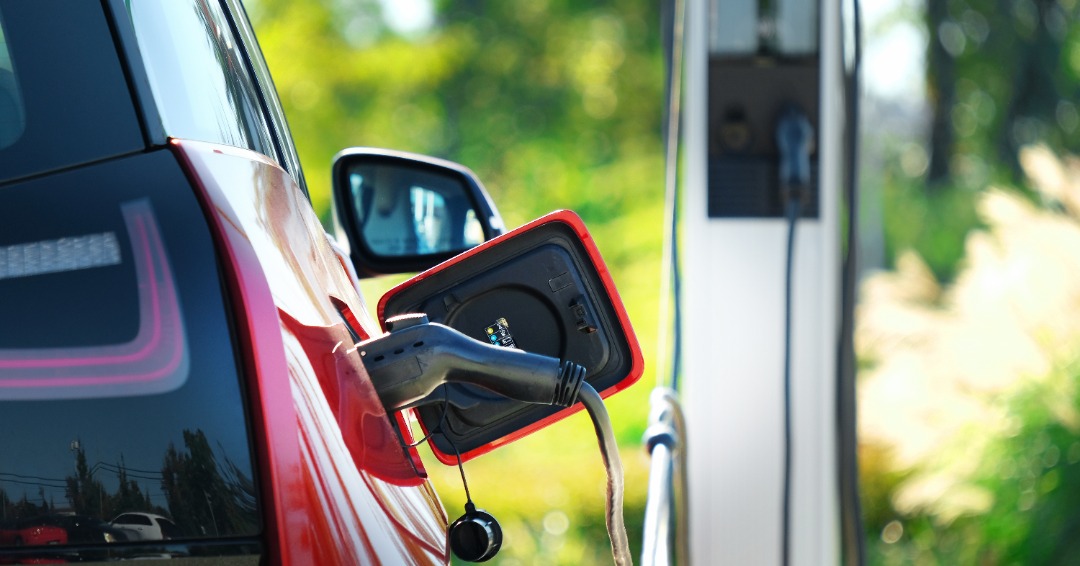 Similar to Socially Responsible Investing (SRI) with stocks and bonds, buying an electric car can be considered a socially responsible investment too. SRI seeks financial gains while promoting positive environmental, societal, and corporate governance changes.
Similar to Socially Responsible Investing (SRI) with stocks and bonds, buying an electric car can be considered a socially responsible investment too. SRI seeks financial gains while promoting positive environmental, societal, and corporate governance changes.
I believe we can go even further and apply the same principles of SRI to everyday purchases. But what are the pros and cons of electric cars? And should you invest in one?
I like to spend time researching larger purchases and consider meeting all or some of the following criteria: Does this business have ethical business practices, diverse governance, and what are they doing to support the environment? And what products or new tech should I consider that I’m not currently using?
After seeing the latest United Nations report on climate change, I decided it was time to see what my family could do to reduce our carbon footprint, so we pulled the trigger on buying an electric vehicle at the end of 2021.
We chose the Tesla Model 3 Long Range Sedan because it has the longest battery range in our price range. I also wanted to check out the tech too–and it’s incredible. There is some disagreement as to if Tesla is an ESG company. ESG stands for Environmental, Social, and Governance, and are factors that investors consider when analyzing investments for SRI. I fall into the camp that feels Tesla is an SRI manufacturer because they are making electric vehicles to help the environment and pushing other automakers to do the same. Others are not as sure of the S and G portion of ESG. Here is Tesla’s most recent Impact Report: https://www.tesla.com/impact-report/2020.
Here is my candid experience with an electric vehicle.
Lives Up to the Hype
The first thing my husband and I noticed about the car is that it is as cool as the Tesla fans say it is. The interior is austere, with the dash containing only a steering wheel and a computer screen. The driving experience is a bit different because it has regenerative braking. If you ease up on the gas pedal, the car slows down, increasing battery range. You could make an entire trip around town without touching the brake pedal–that took some adjustment. And it is FAST. The car is supposed to be able to go from 0-60 in 5.3 seconds, but it feels faster than that. The over-the-air updates upgrade the car with regular software enhancements, so the car gets better over time.
Flaws
Since we purchased a 2022 model, it comes without the radar available with previous models. Tesla has decided to go all-in on its vision system and removed the radar in 2021. Since then, the Washington Post reported that the National Highway Traffic Safety (NHTSA) has received hundreds of reports of “phantom braking.”
We experienced this firsthand driving across the country to California to work remotely. All went well on day one, but on day two, the car did random braking more than ten times while we were on auto-pilot (enhanced cruise control) on Interstate 76 in Nebraska and Colorado. Sometimes the car would slow down a little, and once, it felt like it was slamming on the brakes. Luckily, it didn’t cause us any accidents, but it seriously stressed our marriage vows!
Cold Weather is Torture on Battery Range
Minnesota's cold weather can put a damper on the vehicle’s range. Our car comes with 356 miles of range in perfect conditions. To get peak battery performance, Tesla suggested not to charge your battery beyond 80%, or less than 10%. That brings the range down to 249 miles. During the coldest weather, my 30-mile round-trip commute cost about 60 miles in range. So, Minnesota's worst weather cut the range in half.
Charging is Cheaper than Fueling – When Done at Home
We purchased a vehicle charger for our garage, which can charge 48 miles per hour. We are going on the Dakota Electric ChargeWise plan that will allow us to charge the vehicle from 11 pm to 7 am at about 1/3 of the normal rate. According to Electrek, the Tesla Model 3 Long Range has an 82kWh battery, and they suggest factoring in 85% charging efficiency. Currently, the cost to charge our car from 0-100% is $4.70 (82X.0487)/.85) or $0.013 per mile. The same 356 miles would cost about $35.60 of gas with our old car (assuming $3.50 per gallon) or 0.10 per mile.
There is a Steep Up-Front Cost to Charging
I mentioned we purchased a charger. That cost was $550. Then we needed an electrician to install it for us, which was about another $1,500. I say “about” because our electric box was out of code, so it needed to be upgraded for an additional cost. The cost of putting a fueling station at home was about $2,000. The cost per mile of home charge is about 0.013 cents. Gas for us was about 10 cents per mile. The savings is 8.7 cents per mile. So we will need to drive about 23,000 miles to mitigate this upfront cost ($2,000 / 0.087). For us, the payback will be in about a year.
Charging is More Frequent Than Fueling on the Road
During my last study group, I mentioned we took the new EV on a four-day road trip and another participant who is also an EV owner immediately busted out laughing, because he knew what a ridiculous move that was. It would have been much wiser to take the initial road trip to Duluth or Chicago. Doing so would have allowed us to see what kind of range we were getting and learn to trust the charging prompts. Instead, we left when it was 2 degrees in Minnesota and needed to charge about four or five times that day because of the loss of range due to the cold. We also didn’t trust the instructions, so we charged more frequently than needed. We should have to charge less frequently on the way home because we understand the car now. It also takes more strategic planning because there aren’t charging stations on every highway exit like gas stations. The good news was at no time were we in danger of running out of charge between Minnesota and California. The car will instruct you when and where to stop for a charge.
I added up all our charging costs after we arrived in California, and it was about $200 – which is somewhat less than if we had taken our old gas-powered car.
Would we still buy an EV knowing all this?
Yes. The car drives well, it’s fast when needed, and it’s very responsive. Charging at home is a huge convenience that I hadn’t anticipated, but appreciated. Even with the loss of range due to the cold, we will still be saving quite a bit on fuel. We have no problems commuting or running errands. I’ve learned to trust the car’s instructions on when to fuel on the road. I’m hopeful that Tesla will fix their phantom braking problem, which the NHTSA is investigating. I’m happy to be reducing our carbon footprint.
Next project: Solar?




